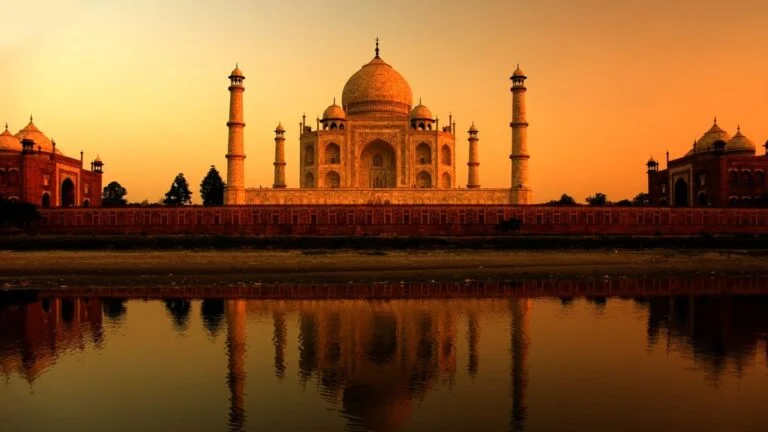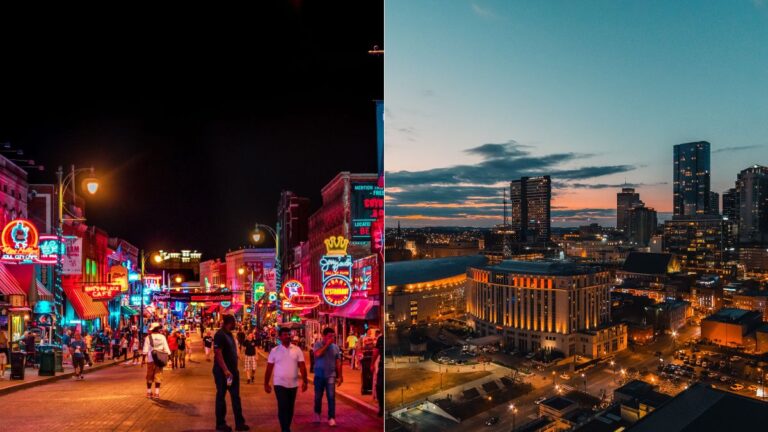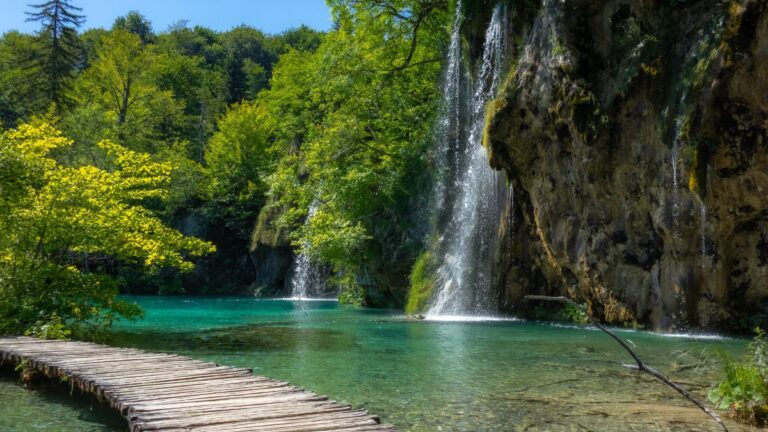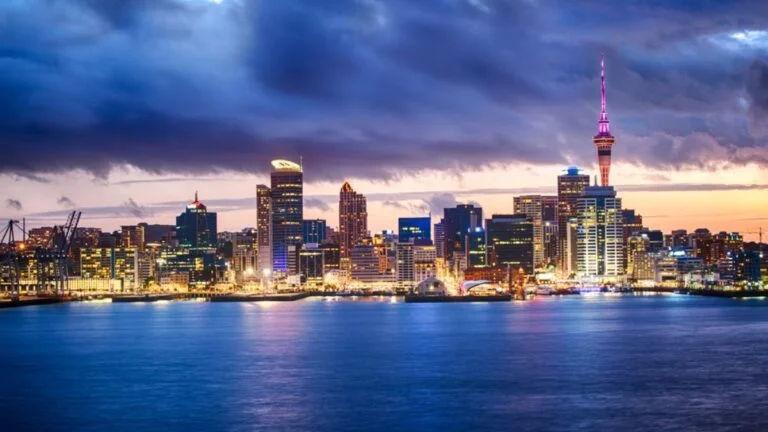50 Facts About Mexico You Need to Know Before Traveling There
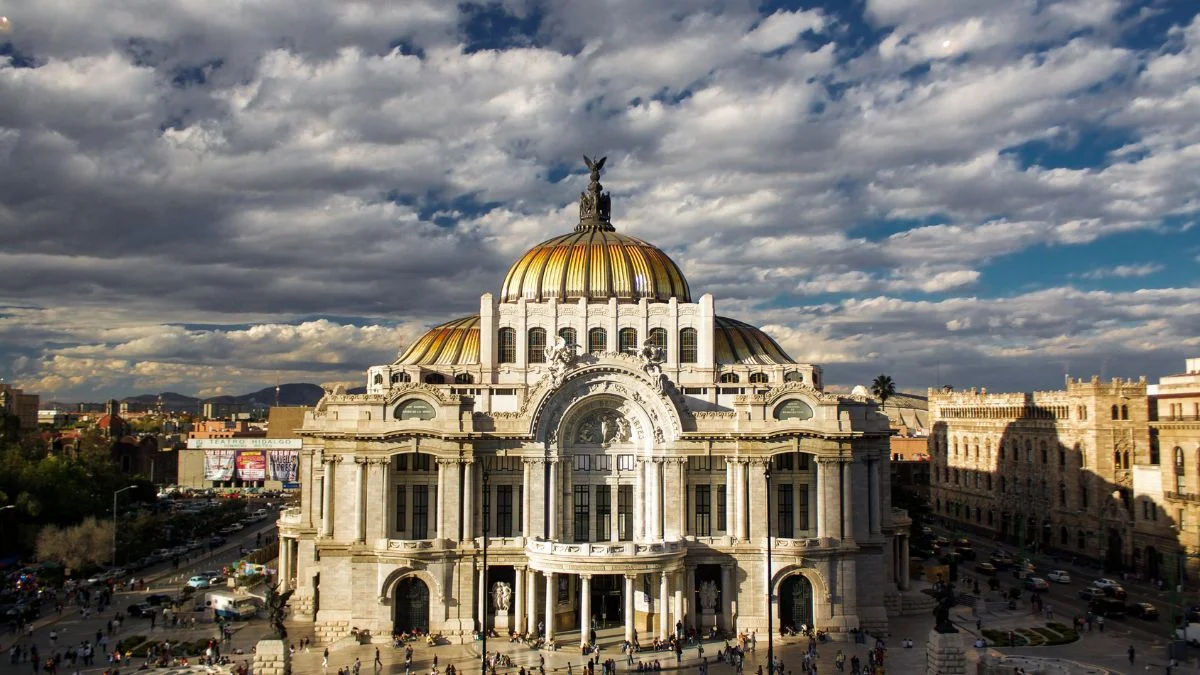
As participants in Amazon Associates and other programs, we earn from qualifying purchases. This comes at no additional cost to you. For more details, see our Affiliate Disclosure.
Heading to Mexico? Great choice! It’s a country bursting with vibrant culture, stunning landscapes, and delicious cuisine. But before you pack your bags, there are a few things you should know. This guide will walk you through 50 must-know facts about Mexico, giving you a sneak peek into what makes this place truly special. From its ancient ruins to modern-day festivities, we’ve got you covered. Let’s dive in and make sure you’re fully prepped for an unforgettable adventure.
Mexico is home to the world’s smallest volcano
Cuexcomate, located in Puebla, is considered the world’s smallest volcano. It’s just 43 feet tall and has a staircase that lets you walk right inside its crater. Despite its size, Cuexcomate is a big hit with those who visit, offering a unique and easy exploration of a volcanic site.
The country has 34 UNESCO World Heritage Sites
Mexico is rich in history and culture, boasting 34 UNESCO World Heritage Sites. These include ancient ruins like Chichen Itza, stunning natural landscapes like the Monarch Butterfly Biosphere Reserve, and historic cities full of colonial architecture. Each site tells a unique story of Mexico’s past and present.
The largest pyramid isn’t in Egypt
The Great Pyramid of Cholula, also in Puebla, takes the title for the world’s largest pyramid by volume. It’s much wider than the Great Pyramid of Giza, though not as tall. Covered by grass and dirt, it looks more like a hill, topped by a church. This hidden giant is a must-see for its sheer scale and history.
Mexico introduced chocolate to the world
Yes, the world has Mexico to thank for chocolate. The ancient Mesoamericans were the first to cultivate cacao plants thousands of years ago. They used the beans to make a bitter drink, which was far from the sweet treat we love today. But it’s the origin of all things chocolate, making Mexico a key player in the world’s chocolate history.
The country is the birthplace of corn
Corn, or maize, was first domesticated in Mexico around 9,000 years ago. It’s a staple in Mexican cuisine, used in everything from tortillas to tamales. This crop played a crucial role in the rise of Mesoamerican civilizations and continues to be vital in Mexican and global agriculture.
Mexico City is sinking
Built on an ancient lakebed, Mexico City is sinking at a rate of up to 12 inches per year in some areas. This is due to the city’s heavy structures and the extraction of water from the underlying aquifers. The sinking is uneven, causing various issues with infrastructure, but it also adds a unique aspect to the city’s history and development.
The world’s largest tamale was made in Mexico
In 2014, the city of Tamaulipas created the world’s largest tamale, measuring over 150 feet long. Tamales are a traditional Mexican dish made of masa (corn dough), which is steamed in a corn husk or banana leaf. This record-breaking tamale showcased the love and pride Mexicans have for their cuisine.
The Chihuahua is named after a Mexican state
The tiny Chihuahua dog breed is named after the Mexican state of Chihuahua. It’s believed that these small dogs descended from an ancient dog breed called the Techichi, cherished by the Toltec civilization in Mexico. Today, Chihuahuas are loved worldwide for their small size and big personalities.
Mexico has the world’s largest Spanish-speaking population
With over 120 million people speaking the language, Mexico has more Spanish speakers than any other country, including Spain. Spanish is the most widely taught second language in Mexico, and the country’s rich literature, music, and film in Spanish contribute to the global Spanish-speaking culture.
The Day of the Dead is a major Mexican holiday
The Day of the Dead, or ‘Día de los Muertos,’ is a significant Mexican holiday that celebrates the lives of the deceased. It’s a colorful, festive event with ofrendas (altars), sugar skulls, and marigolds, symbolizing the vibrant connection between life and death. This holiday highlights the Mexican approach to death, viewing it as a part of the cycle of life, to be remembered and celebrated.
Mariachi music is a UNESCO Intangible Cultural Heritage
Mariachi music is more than just a genre; it’s a symbol of Mexican culture. Recognized by UNESCO, this music style involves a group of musicians – playing violins, trumpets, and guitars, including the unique vihuela and guitarrón – dressed in traditional charro outfits. Mariachi bands are a staple at celebrations, serenading with songs of love, country, and passion.
Mexico’s flag has deep meanings
The Mexican flag is rich in symbolism. The green represents hope and prosperity, the white signifies purity and unity, and the red stands for the blood of national heroes. At the center is the national coat of arms, featuring an eagle perched on a prickly pear cactus, devouring a serpent. This image has roots in an Aztec legend and embodies the strength and resilience of the Mexican people.
The country is a biodiversity hotspot
Mexico is one of the most biodiverse countries in the world, ranking fourth globally. It’s home to a wide array of habitats, from deserts and rainforests to mountains and oceans. This diversity supports an incredible variety of plants and animals, many of which are endemic, meaning they’re found nowhere else on Earth.
Tequila can only be produced in certain areas
Tequila, the iconic Mexican spirit, has a protected designation of origin. This means it can only be produced in specific regions of Mexico, primarily in the state of Jalisco and in some areas of Guanajuato, Michoacán, Nayarit, and Tamaulipas. Made from the blue agave plant, tequila is not just a beverage; it’s a cultural emblem.
The Aztec Empire was one of the world’s most sophisticated civilizations
Before the Spanish conquest, the Aztec Empire was a force to be reckoned with in Mesoamerica. Centered in what is now Mexico City, the Aztecs were known for their advanced architectural, agricultural, and mathematical achievements. Their society was rich in art, religion, and culture, making it one of the most sophisticated of its time.
Mexico introduced the world to avocados
Avocados are another gift from Mexico to the global pantry. Originating in south-central Mexico around 10,000 years ago, avocados have become a beloved ingredient worldwide. Whether in guacamole, salads, or on toast, avocados are cherished for their creamy texture and health benefits.
The Mexican Revolution shaped modern Mexico
The Mexican Revolution, which began in 1910, was a major turning point in the country’s history. It started as a movement against the long-time dictator Porfirio Díaz and evolved into a complex struggle for social and economic reforms. The revolution brought significant changes, including land reforms and the establishment of a constitutional republic, shaping modern Mexican society.
The National Autonomous University of Mexico (UNAM) is one of the oldest in the Americas
Founded in 1551, UNAM is not only one of the oldest universities in the Americas but also one of the most prestigious in the Spanish-speaking world. Its main campus in Mexico City is a UNESCO World Heritage Site, notable for its unique architectural features and murals by famous Mexican artists.
The Monarch Butterfly Biosphere Reserve is a natural wonder
Each year, millions of monarch butterflies migrate from the United States and Canada to the forests of Michoacán and the State of Mexico. This incredible journey ends in the Monarch Butterfly Biosphere Reserve, where the butterflies cluster on oyamel fir trees, creating a breathtaking natural spectacle. This reserve is crucial for the survival of the monarch butterfly’s migration, one of the most remarkable natural phenomena on the planet.
Mexican cuisine is recognized by UNESCO
Mexican cuisine is much more than tacos and burritos; it’s a complex tradition that blends indigenous and Spanish influences, recognized by UNESCO as an Intangible Cultural Heritage of Humanity. Dishes like mole, pozole, and tamales offer a taste of Mexico’s rich culinary history, each with its own story and regional variation.
The Copper Canyon is larger and deeper than the Grand Canyon
In the northern state of Chihuahua, the Copper Canyon (Barrancas del Cobre) is a network of canyons that collectively are larger and deeper than the Grand Canyon in the United States. The area is known for its breathtaking views, traditional Tarahumara culture, and the Chihuahua al Pacifico Railway, offering one of the most scenic train rides in the world.
The Voladores de Papantla perform a traditional ritual
The Voladores de Papantla, or ‘Flying Men’, is a cultural tradition originating from the Totonac people of Veracruz. Participants climb a 30-meter pole and then ‘fly’ around it attached by ropes, symbolizing a connection to the divine. This ritual, intended to ask the gods for fertility and a good harvest, is recognized by UNESCO as an Intangible Cultural Heritage.
Lucha Libre is a popular Mexican sport
Lucha Libre, Mexican professional wrestling, is known for its colorful masks, acrobatic maneuvers, and dramatic storytelling. Wrestlers, or ‘luchadores’, adopt personas and wear masks to maintain anonymity. Lucha Libre has become a cultural phenomenon, transcending the sport to influence Mexican pop culture and art.
The Mayan civilization created the Long Count calendar
The ancient Mayan civilization, which flourished in what is now Mexico, Guatemala, Belize, Honduras, and El Salvador, developed the Long Count calendar. This sophisticated system could track vast periods of time and is famous for the 2012 phenomenon, a misinterpretation of the calendar’s end date that many believed predicted the end of the world.
Puebla’s Cinco de Mayo commemorates a significant victory
Cinco de Mayo is often mistaken for Mexico’s Independence Day, but it actually commemorates the Battle of Puebla in 1862, where Mexican forces won a significant victory against the French. While it’s a relatively minor holiday in Mexico, celebrated mainly in Puebla, it has become a significant celebration of Mexican heritage in the United States.
The cenotes of the Yucatán Peninsula are natural swimming holes
Cenotes are natural sinkholes filled with fresh water, found primarily in the Yucatán Peninsula. Formed by the collapse of limestone bedrock, cenotes were considered sacred by the Maya, who believed they were portals to the underworld. Today, these clear, cool swimming holes are popular with locals and tourists alike for snorkeling and diving.
The Guelaguetza festival showcases Oaxaca’s indigenous cultures
The Guelaguetza is an annual event in Oaxaca that celebrates the region’s indigenous cultures and traditions. The festival features traditional dancing, costumes, music, and food, representing the diverse ethnic groups of Oaxaca. ‘Guelaguetza’ means mutual cooperation and support, reflecting the spirit of community and sharing inherent in the event.
The axolotl is a unique Mexican amphibian
Native to the lake complex of Xochimilco near Mexico City, the axolotl is a rare type of salamander that retains its larval features into adulthood, a trait known as neoteny. These fascinating creatures are capable of regenerating lost body parts and are studied for their unique biological properties. However, they are currently endangered due to habitat loss and pollution.
The Mexican Constitution was the first to include social rights
Adopted in 1917, the Mexican Constitution was pioneering for its inclusion of social rights, setting a precedent for future constitutions around the world. It addressed land reform, education, and labor rights, reflecting the revolutionary ideals of social justice and equality.
The Palace of Fine Arts in Mexico City is an architectural masterpiece
The Palacio de Bellas Artes in Mexico City is a cultural landmark known for its stunning architecture, combining Art Nouveau, Art Deco, and Neoclassical styles. Inside, it houses murals by famous Mexican artists like Diego Rivera and hosts a wide range of cultural events, including opera, ballet, and classical music performances.
The Nahuatl language influenced Mexican Spanish
Nahuatl, the language of the Aztecs, has left a significant mark on Mexican Spanish, contributing many words, especially names for indigenous plants, animals, and foods. Words like ‘chocolate’, ‘avocado’, and ‘tomato’ have Nahuatl origins and are now part of global vocabulary, showcasing the linguistic heritage of Mexico.
The Isla de las Muñecas is a unique and eerie attraction
Located in the canals of Xochimilco near Mexico City, the Island of the Dolls (Isla de las Muñecas) is a small island decorated with hundreds of hanging, deteriorating dolls. The island’s caretaker began hanging the dolls to appease the spirit of a girl who drowned nearby. Today, it’s a peculiar tourist attraction that fascinates and unnerves visitors.
Mexican muralism was a significant art movement
In the early 20th century, Mexico gave birth to a powerful art movement known as muralism. Artists like Diego Rivera, José Clemente Orozco, and David Alfaro Siqueiros used public buildings as their canvases, painting large-scale murals that depicted social, political, and historical themes. These works were meant to make art accessible to the masses and to promote social ideals.
The Popocatépetl and Iztaccíhuatl volcanoes have a romantic legend
The Popocatépetl and Iztaccíhuatl volcanoes, visible from Mexico City and Puebla, are steeped in a romantic Aztec legend. It tells of a warrior (Popocatépetl) who loved a princess (Iztaccíhuatl). Mistakenly believing her lover was dead in battle, Iztaccíhuatl died of grief. When Popocatépetl returned, he carried her body to the mountains, where they became the two peaks, symbolizing eternal love.
The Sonoran Desert is one of the hottest and most biologically diverse deserts
Stretching across northern Mexico and into the United States, the Sonoran Desert is recognized for its extreme heat and significant biodiversity. It’s home to the iconic saguaro cactus and a variety of wildlife, including the Mexican gray wolf and the Sonoran pronghorn. The desert’s unique ecosystem supports a surprising array of life adapted to its harsh conditions.
La Quebrada cliff divers are a famous Acapulco attraction
In Acapulco, the La Quebrada Cliff Divers have been thrilling audiences since 1934. Divers leap from cliffs up to 35 meters high into a narrow sea inlet, timing their jumps to coincide with the incoming waves. This daring tradition showcases the skill and bravery of the divers and is a must-see for visitors to Acapulco.
The Festival Internacional Cervantino is one of Latin America’s largest arts festivals
Held annually in Guanajuato, the Festival Internacional Cervantino is a cultural extravaganza that attracts artists and performers from around the world. The festival celebrates Miguel de Cervantes, author of ‘Don Quixote’, and features a diverse program of music, theater, dance, and visual arts, making it a highlight of Mexico’s cultural calendar.
The Mexican hairless dog, or Xoloitzcuintli, is a rare breed
The Xoloitzcuintli, also known as the Mexican hairless dog, is one of the country’s most ancient and rare dog breeds. Revered by the Aztecs for its healing and protective qualities, the Xolo is characterized by its lack of fur, save for a few tufts of hair. This unique breed is considered a national treasure and a living link to Mexico’s pre-Columbian past.
Tulum is known for its stunning Mayan ruins by the sea
The coastal town of Tulum boasts some of the most picturesque Mayan ruins in Mexico. Situated on cliffs overlooking the Caribbean Sea, the Tulum archaeological site was once a thriving port and trading center. Today, its well-preserved temples and stunning natural setting make it a popular destination for history enthusiasts and beachgoers alike.
The Mexican hat dance, or Jarabe Tapatío, is the national dance
The Jarabe Tapatío, often referred to as the Mexican hat dance, is considered the national dance of Mexico. It symbolizes courtship and is performed by a couple, with the man laying his sombrero on the ground as a sign of his affection. The dance, with its lively steps and colorful traditional attire, embodies the spirit of Mexican culture.
The Sierra Madre Mountains are a major geographic feature
The Sierra Madre, consisting of the Sierra Madre Oriental, Sierra Madre Occidental, and Sierra Madre del Sur, are a significant mountain range system that runs through Mexico. These mountains are not only a key geographic landmark but also host diverse ecosystems, ranging from deserts to cloud forests, supporting a wide array of flora and fauna.
Mexican cuisine varies greatly by region
Mexican food is incredibly diverse, with each region offering its own unique dishes and flavors. From the seafood dishes of the coastal areas to the hearty stews and meat dishes of the north, there’s a vast array of culinary experiences to explore. Southern Mexico is known for its use of indigenous ingredients like corn, beans, and chili peppers, while the Yucatán Peninsula offers a blend of Mayan and Caribbean influences.
The Basilica of Our Lady of Guadalupe is a major pilgrimage site
The Basilica of Our Lady of Guadalupe in Mexico City is one of the most visited Catholic pilgrimage sites in the world. It’s dedicated to the Virgin Mary, who is said to have appeared to a man named Juan Diego in 1531. The basilica houses the original cloak with the image of Our Lady of Guadalupe, and millions of pilgrims visit each year, especially on December 12, her feast day.
Mexico has a strong tradition of folk art
Mexican folk art is renowned for its vibrant colors and intricate designs, reflecting centuries of cultural blending and creativity. Artisans across the country craft beautiful pottery, textiles, baskets, and more, often using traditional methods passed down through generations. These crafts not only serve as a form of artistic expression but also preserve Mexico’s rich cultural heritage.
The Mexican Revolution’s impact is still felt today
The Mexican Revolution, which lasted from 1910 to 1920, deeply shaped Mexico’s social, political, and cultural landscape. Its legacy is evident in the country’s commitment to social justice, land reform, and national sovereignty. The revolution also inspired a wave of artistic and literary movements that sought to capture the spirit of the Mexican people and their struggles.
The Bajío region played a crucial role in Mexico’s independence
The Bajío, a fertile region in central Mexico, was a key area during the Mexican War of Independence. Cities like Guanajuato, Querétaro, and San Miguel de Allende were centers of revolutionary activity, with heroes like Miguel Hidalgo y Costilla leading the charge against Spanish rule. Today, these cities are known for their well-preserved colonial architecture and historical significance.
The poinsettia, a popular holiday plant, originated in Mexico
The poinsettia, known in Mexico as “Noche Buena,” is native to the country and plays a significant role in Christmas celebrations. The plant’s bright red leaves, which resemble a star, are said to symbolize the Star of Bethlehem. Joel Roberts Poinsett, the first United States Ambassador to Mexico, introduced the plant to the U.S. in the 1820s, leading to its common name.
The Zócalo in Mexico City is one of the largest city squares in the world
The Zócalo, or Plaza de la Constitución, is a massive public square in the heart of Mexico City. It has been a gathering place since Aztec times, when it was the center of the ancient city of Tenochtitlán. Today, the Zócalo hosts major events, demonstrations, and celebrations, surrounded by historic buildings like the Metropolitan Cathedral and the National Palace.
Mexican cinema has a golden age
The Golden Age of Mexican Cinema, from the 1930s to the 1950s, was a period of prolific film production and significant cultural impact. Films from this era showcased the talents of actors like Dolores del Río, Pedro Infante, and María Félix, and directors like Emilio “El Indio” Fernández. These films are celebrated for their artistic quality and their exploration of Mexican identity and social issues.
The Mexica people founded Tenochtitlán, now Mexico City
Tenochtitlán, the capital of the Aztec Empire, was founded in 1325 on an island in Lake Texcoco. According to legend, the Mexica people were guided by their god Huitzilopochtli to establish their city where they found an eagle perched on a cactus, eating a snake. This iconic image is now at the center of the Mexican flag. The city was one of the largest and most sophisticated of its time, with a complex social, political, and economic system.

